Norbert Hanik
Low-Cost Phase Precoding for Short-Reach Fiber Links with Direct Detection
Mar 27, 2025
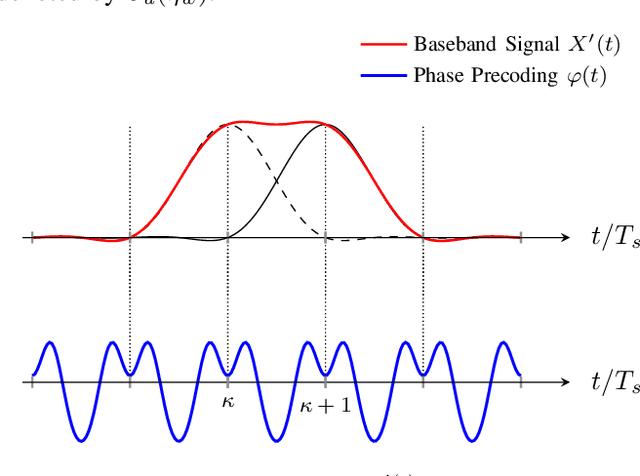
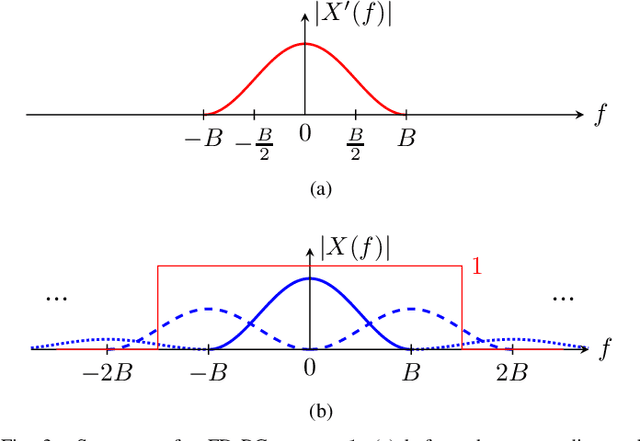

Abstract:Low-cost analog phase precoding is used to compensate chromatic dispersion (CD) in fibers with intensity modulation and direct detection (IM/DD). In contrast to conventional precoding with an in-phase and quadrature (IQ) Mach-Zehnder modulator (MZM), only a single additional phase modulator (PM) is required at the transmitter. Depending on the CD, the PM generates a periodic phase modulation that is modelled by a Fourier series and optimized via a mean squared error (MSE) cost criterion. Numerical results compare achievable information rates (AIRs) for 4- and 6-PAM. With the additional PM, energy gains of up to 3 dB are achieved for moderate fiber lengths.
Optimizing Bipolar Constellations for High-Rate Transmission in Short-Reach Fiber Links with Direct Detection
Jul 06, 2024Abstract:Bipolar modulation increases the achievable information rate of communication links with direct-detection receivers. This paper optimizes bipolar transmission with a modulator bias offset for short-reach fiber links. A neural network equalizer with successive interference cancellation is shown to gain over 100 Gbit/s compared to standard receivers.
Neural Network Equalizers and Successive Interference Cancellation for Bandlimited Channels with a Nonlinearity
Jan 17, 2024Abstract:Neural networks (NNs) inspired by the forward-backward algorithm (FBA) are used as equalizers for bandlimited channels with a memoryless nonlinearity. The NN-equalizers are combined with successive interference cancellation (SIC) to approach the information rates of joint detection and decoding (JDD) with considerably less complexity than JDD and other existing equalizers. Simulations for short-haul optical fiber links with square-law detection illustrate the gains of NNs as compared to the complexity-limited FBA and Gibbs sampling.
Phase Matching for Multimode Four-Wave Mixing in Few-Mode Fibers and Nano-Rib Waveguides
Aug 11, 2022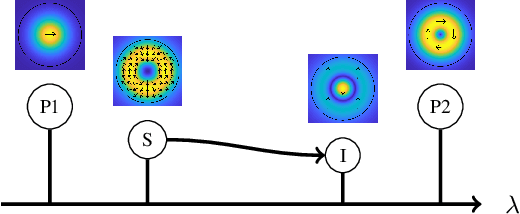
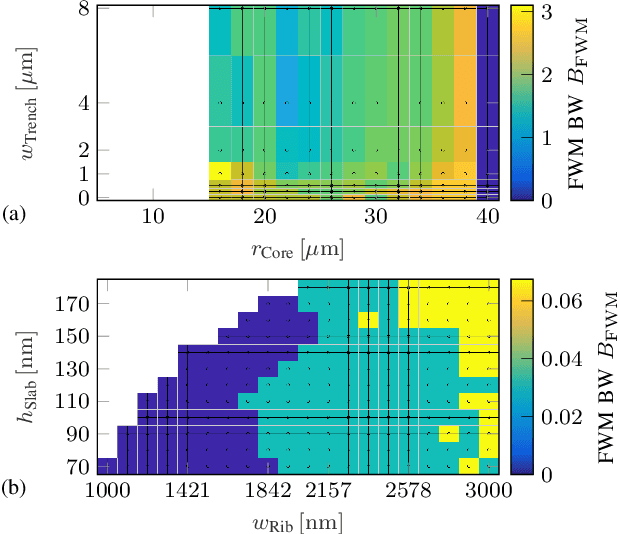
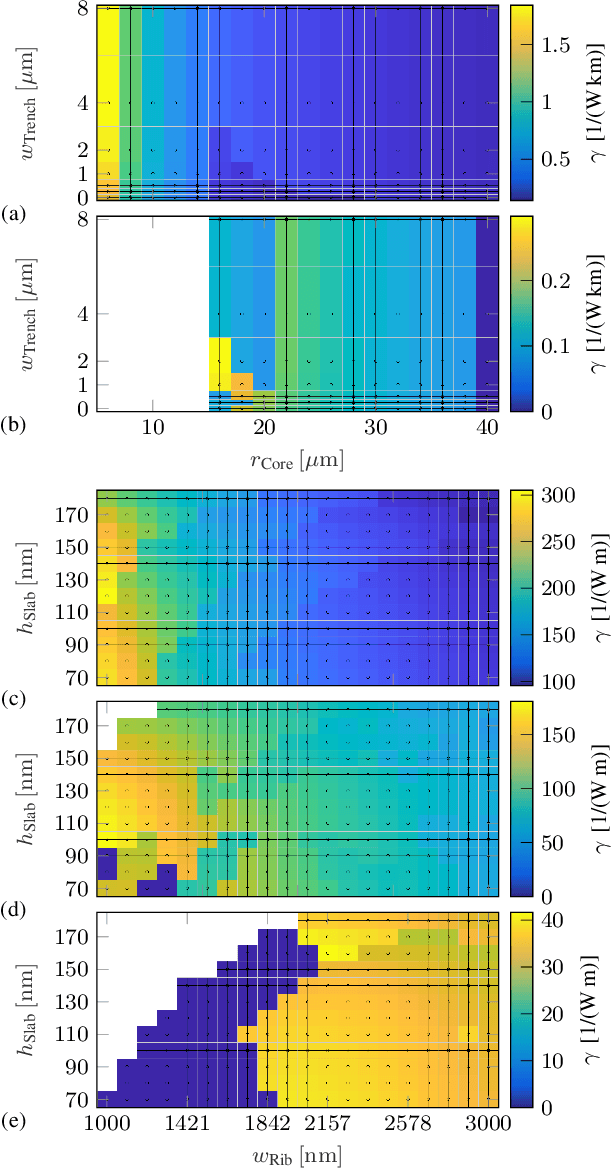
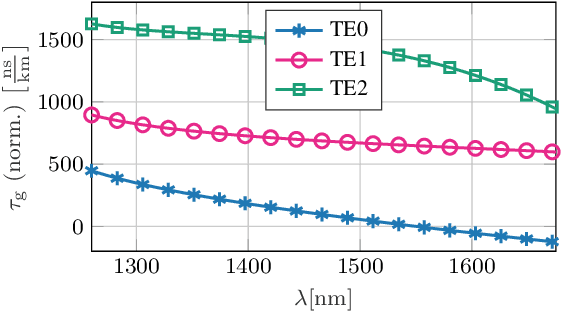
Abstract:We compare phase matching for four-wave mixing using one, two, three, and four waveguide modes. For the comparison, we use numerical optimizations and an estimate of the generated idler power. We present results for few-mode fibers and nano-rib waveguides and show that for both waveguide types, four-wave mixing bandwidths and idler powers are best for one- and two-mode operation and that four-mode four-wave mixing is not feasible at all. Some nano-rib waveguides support three-mode four-wave mixing, albeit with much reduced bandwidth and reduced idler power.
Comparison of PAM-6 Modulations for Short-Reach Fiber-Optic Links with Intensity Modulation and Direct Detection
May 11, 2022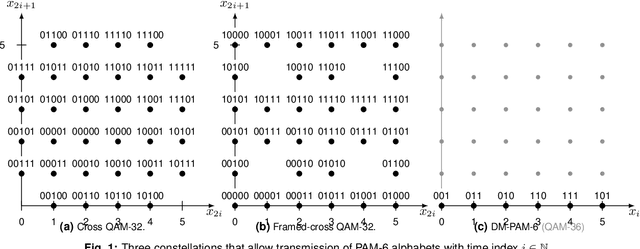

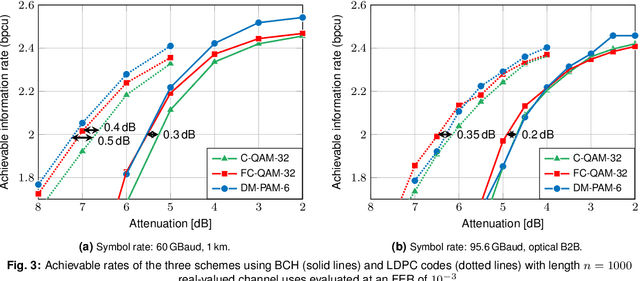
Abstract:PAM-6 transmission is considered for short-reach fiber-optic links with intensity modulation and direct detection. Experiments show that probabilistically-shaped PAM-6 and a framed-cross QAM-32 constellation outperform conventional cross QAM-32 under a peak power constraint.
Experiments on Bipolar Transmission with Direct Detection
May 11, 2022

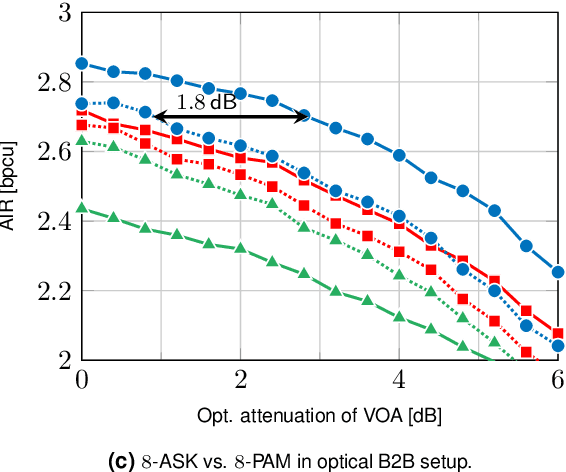
Abstract:Achievable information rates of bipolar 4- and 8-ary constellations are experimentally compared to those of intensity modulation (IM) when using an oversampled direct detection receiver. The bipolar constellations gain up to 1.8 dB over their IM counterparts.
 Add to Chrome
Add to Chrome Add to Firefox
Add to Firefox Add to Edge
Add to Edge